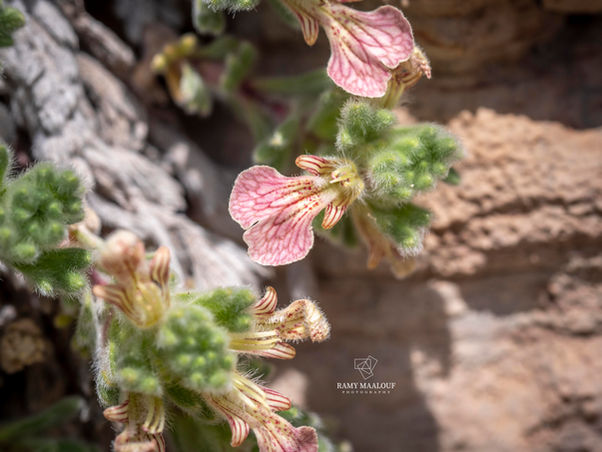Family |
Lamiaceae
Ajuga chamaepitys subsp. tridactylites
(Boiss.) Bornm.
Ajuga chamaepitys subsp. tridactylites (Gingins ex Benth.) Arcang.
(Nouvelle Flore du Liban et de la Syrie, vol. 3, pp. 98 – 99, Pl. XLVI nº 6 – 8; 1973)
Life‑form & habit : Long‑lived (biennial to perennial) herb forming loose mats; root thick and often clearly woody but not creeping. Numerous stems 5 – 15 cm (sometimes longer), slender to somewhat stout, hispid with spreading hairs that may appear reddish.
Leaves :
Basal – Lanceolate‑spatulate, 4 – 5 cm, shortly 3‑lobed at the tip, soon withering and therefore rarely present on herbarium material.
Cauline – Usually hoary (canescent) with a dense, non‑woolly indumentum; outline extremely variable between populations, trifid with lobes narrowly to broadly linear (occasionally ovate).Calyx : Short, very hispid; five acute lobes scarcely exceeding the tube.
Corolla : Four to five times the calyx length; pale straw‑yellow to light yellow (never pure white, rarely pink); lower lip variably widened.
Nutlets : Transversely wrinkled (not reticulate); darken strongly on drying.
Flowering period : May – November.
Habitat & elevation : Stony ground and open rocky slopes, generally above 500 m; earlier coastal reports are regarded as misidentifications.
Native range : Scattered montane colonies in Lebanon (e.g., Kouachré, Bcharré, Faraya, Cedars, Dahr el‑Baidar, Jabal Kneissé, Jabal Sannine) and Syria (Anti‑Lebanon, Aleppo region, Jabal Qasyoun, Palmyrean foothills), extending south‑eastwards to Sinai, Palestine and Trans‑Jordan as well as into Turkey. Rose‑flowered forms are rare and largely confined to the Sinai type‑locality and an isolated population near Sir‑ed‑Dinné/Jabal Sannine, while yellow‑flowered plants predominate elsewhere.








